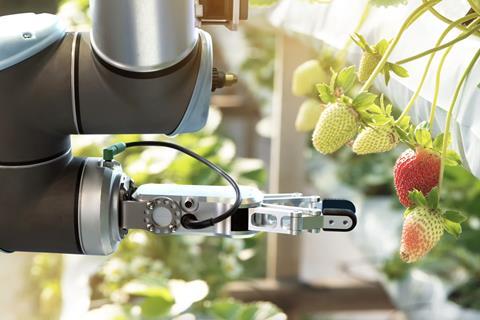Analyst says greater investment is needed to transform food systems with technology, particularly in the face of the labour cost crunch

The UK food industry is at a pivotal moment, facing unprecedented challenges due to surging labour costs and a growing population.
As a result, James Walton, chief economist at IGD, has emphasised the urgent need for businesses to ramp up investment in AI and robotics to ensure a thriving and resilient food system.
Mounting labour costs, climate change, tariffs, and an increasing population are putting immense pressure on the food system’s resilience, he said.
The latest IGD Economic Viewpoint Report, “How to respond to rising labour costs in 2025”, highlights a ”perfect storm brewing in the food system”.
Rising labour costs, geopolitical risks and inflation are creating a challenging environment for businesses and consumers alike. This combination of factors is leading to a highly volatile and uncertain environment, impacting both consumer and business confidence, and affecting operations across the food system.
IGD forecasts retail food prices to rise 3.4 per cent on average compared to 5.2 per cent for away-from-home food prices in 2025, fuelled by rising labour costs.
Financial confidence is down sharply, with only 23 per centexpecting to be better off in the next year, the lowest since November 2023, the report said.
More than eight in ten consumers expect rising prices for food, grocery, and dining out, while retailers are increasingly turning to technology to boost productivity, tackle staffing gaps and cope with rising labour expenses.
“The IGD Economic Viewpoint highlights the multifaceted challenges facing the food industry, from rising labour costs and geopolitical risks to inflation and dipping business and consumer confidence,” said Michael Freedman, head of economic and consumer insight at IGD.
”The report underscores the need for strategic resilience, innovation, and collaboration across the food system.”
Labour cost crunch
The food industry has seen nearly 200,000 fewer people working in food manufacturing since 1980, with the number dropping from 613,750 in 1980 to 415,750 in 2024.
Despite a population increase of 13mn people in the UK during this period, food manufacturing has become more labour-efficient, with each worker now serving 167 people compared to just 91 in 1980.
April 2025 marks a critical point, IGD pointed out, as measures introduced in the Autumn Budget 2024 – including the higher National Living Wage and changes to employer National Insurance Contributions – have sharply increased labour costs, particularly for part-time and lower-wage roles.
”With profits already thin, there is no room to absorb these cost increases, and consumers are likely to end up paying more,” the analyst reported.
”Looking ahead, the current approach falls short. With the UK population set to grow by 7mn in the next 20 years, the focus must shift. The food industry faces two significant challenges: dealing with rising labour costs and the need to feed more people.”
Expanding the capacity to produce, process, and distribute food domestically is ”essential”, it noted.
”Shrinking the system won’t sustain future demand. It’s a pivotal moment for long-term strategies in the food sector. The UK food system must grow and improve, not shrink.”
As a result, the UK needs to embrace the next wave of technological advancements, particularly in AI and robotics, to meet these challenges, IGD urged.
”The necessary technology is now available, and the current pressures make this the perfect time to adopt these innovations.”
Opportunities for adaptation
Despite the challenges, there are opportunities for the entire food industry to adapt, the analyst continued.
Retailers are increasingly turning to technology to boost productivity, cut costs, and cope with rising labour expenses amidst staffing challenges.
In retail these advancements are ”reshaping efficiency and setting new benchmarks”, it explained.
Toby Pickard, retail futures senior partner a IGD, emphasised the urgent need for food businesses to build a better system through automation and innovation.
“The food industry is at a critical juncture,” he said. ”By leveraging technology and innovative solutions, we can transform the sector, ensuring sustainability and growth.
”It’s not just about reducing headcount; it’s about creating a resilient and efficient food system that can weather these challenges and emerge stronger.”
The food industry ”stands at a crossroads”, IGD concluded.
”Embracing automation, AI and robotics is not just a luxury but a necessity for the future.
”This is something acknowledged by government in development of its food strategy which aims to drive investment, productivity and innovation so that our largest manufacturing sector can realise its potential for economic growth,” the analyst added.



